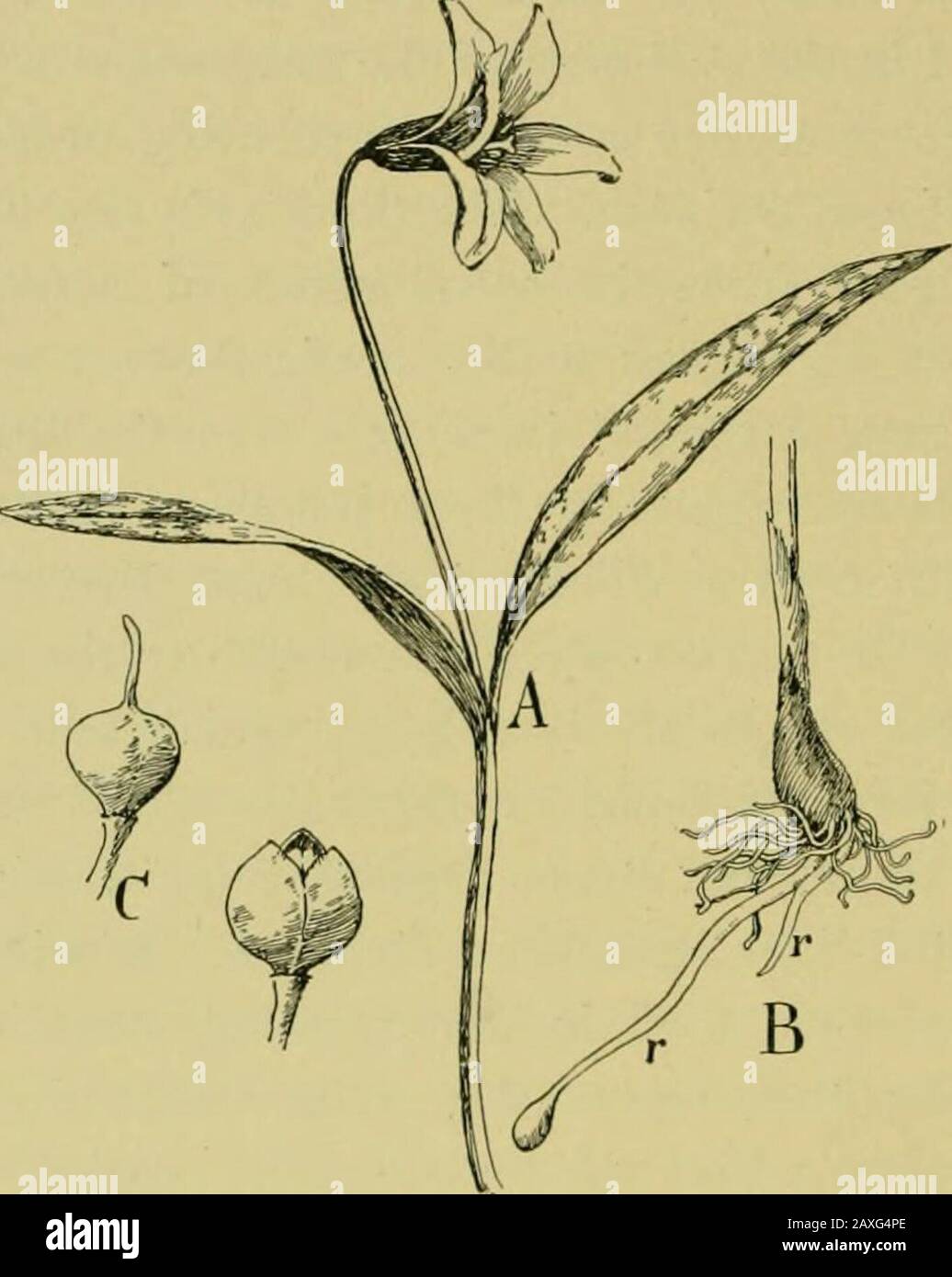Nature and development of plants . them out is fairly started (see page 39). (a) The Fawn Lily, Erythronium americanum.—This speciesmay be examined as typical of the order (Fig. 287). This planthas received the atrocious name of adders-tongue, which is of-fensive and far-fetched, and also of dog-tooth violet, althoughit is not a violet at all. Burroughs has suggested the very appro-priate name of trout lily, since the mottled leaves often formconspicuous beds on shady banks of streams; but to those whohave experienced the spring time in the north country, the termfawn lily seems singularly app

Image details
Contributor:
The Reading Room / Alamy Stock PhotoImage ID:
2AXG4PEFile size:
7.1 MB (172.3 KB Compressed download)Releases:
Model - no | Property - noDo I need a release?Dimensions:
1411 x 1770 px | 23.9 x 30 cm | 9.4 x 11.8 inches | 150dpiMore information:
This image is a public domain image, which means either that copyright has expired in the image or the copyright holder has waived their copyright. Alamy charges you a fee for access to the high resolution copy of the image.
This image could have imperfections as it’s either historical or reportage.
Nature and development of plants . them out is fairly started (see page 39). (a) The Fawn Lily, Erythronium americanum.—This speciesmay be examined as typical of the order (Fig. 287). This planthas received the atrocious name of adders-tongue, which is of-fensive and far-fetched, and also of dog-tooth violet, althoughit is not a violet at all. Burroughs has suggested the very appro-priate name of trout lily, since the mottled leaves often formconspicuous beds on shady banks of streams; but to those whohave experienced the spring time in the north country, the termfawn lily seems singularly appropriate. The leaves of the fawn 3§2 THE LILIALES lily spring from deep-seated bulbs that are formed in a peculiarway. The seed germinates on the surface of the soil and formsa very small bulb and a single grass-like leaf. During each suc-ceeding season a larger leaf and bulb are formed, and when ofsufficient size, the bulb sends out one or more runners that pene-trate the soil and develop new bulbs at their tips (Fig. 287, B).. Fig. 287. The fawn lily, Erytlironium americanum: A, habit of theplant. B, the bulb, showing the origin of the stem and leaves shown in A—r, runners that penetrate the soil forming new bulbs at their tips. C, pistil of three carpels, at the right the fruit, a capsule, opening to scatterthe seeds. In this way the bulbs become deep-seated and rapidly increasein numbers, and after several years they attain sufficient size todevelop two leaves and a flower. The mottled leaves have thesame habit of rolling up in emerging from the ground, as notedin the skunk cabbage. It is to be observed that the positionassumed by the mature leaf of many plants is often strikinglycorrelated with the extent of the root system. In the Lilialesgenerally, which do not have extensive lateral roots, the hang ofthe leaves is such as to direct the water that falls upon them DEVELOPMENT OF PLANTS 3S3 towards the center of the plant, a feature doubtless of consider-able advantage